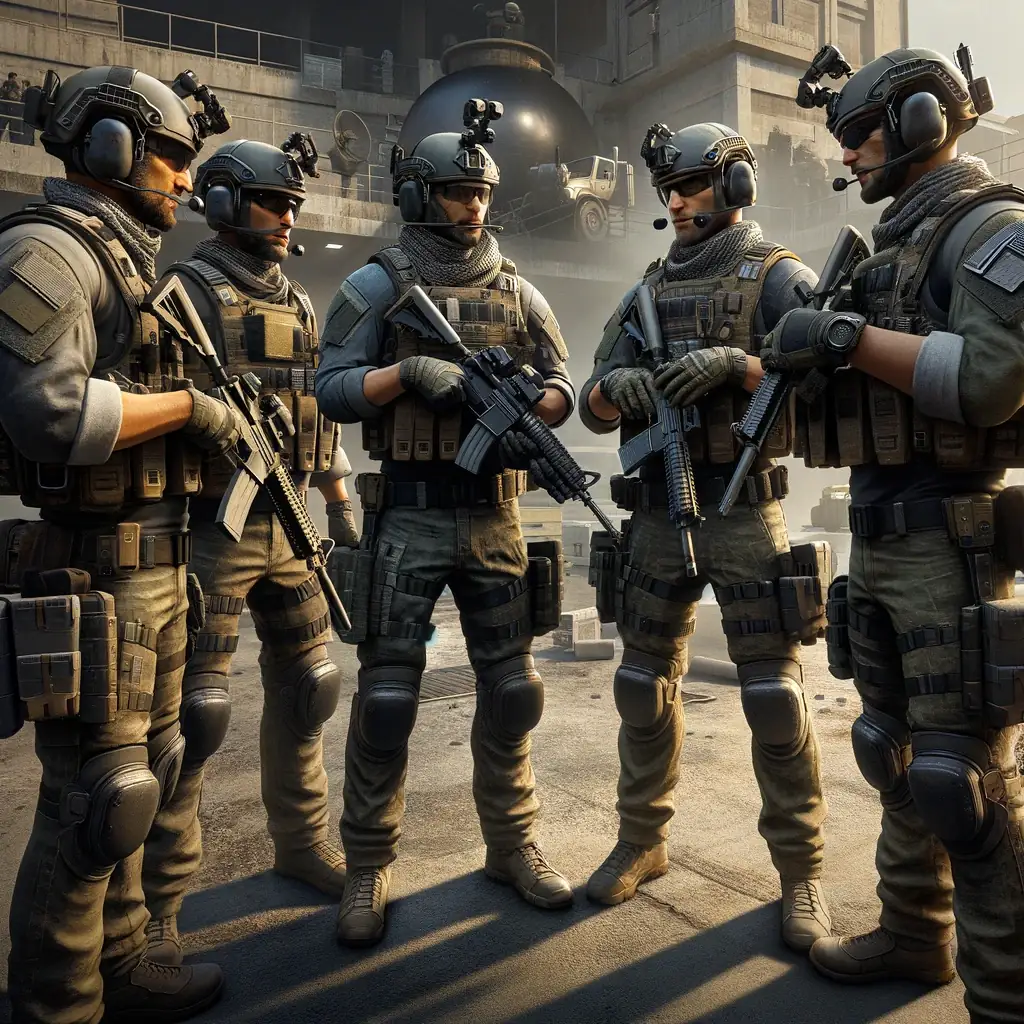CT Side
Playing the CT Side in CS2
Playing Counter-Strike is a delicate balance of strategy, skill, and the understanding of game mechanics. These factors get even more critical when you’re on the Counter-Terrorist (CT) side, as the game dynamics are fundamentally different from those of the Terrorists (T). This guide aims to equip you with everything you need to dominate the CT side in Counter-Strike 2 (CS2).
Understanding the CT Role
The primary objective of the CT side is to prevent the Terrorists from planting the bomb at designated sites. Alternatively, if the bomb is planted, the CTs should defuse it before it detonates. CTs also win a round by eliminating all T players. These core responsibilities define the gameplay strategies and tactics for CTs.

Map Control and Positioning
The key on the CT side is that you want to hold defensive off-angles, but without holding them static. You always want to peek the enemies from some cover so they can’t preaim you. This is crucial against good opponents.
Defensive Positioning
The cornerstone of CT side gameplay is holding the bomb sites and maintaining control of key areas of the map. Learning the layout of each map is crucial. The more familiar you are with the terrain, the better you’ll be able to position yourself to fend off T-side attacks.
Patience is Key
As a CT, you’re not just defending a location, you’re also defending time. Unlike the T side, CTs are not under pressure to plant the bomb. This difference implies that CTs can afford to play more passively and cautiously.
Your positions should allow quick rotations to bomb sites and create crossfire setups with teammates. Spread out across the map to avoid giving away a bomb site, but make sure to always have a teammate within rotating distance.
Tactical Gameplay: Holding, Pushing, and Rotating
Holding Bomb Sites
Holding a bomb site is the primary responsibility of the CT side. Holding requires understanding common T-side strategies, proper positioning, and effective use of utility.
Aggressive Play: The Art of Pushing
While the CT side is typically more passive, there are instances where being aggressive can pay off. This includes situations like ‘pushing’ certain areas of the map early in the round to gather information or catch the T side off-guard.
Rotating Between Sites
Rotations, or moving from one part of the map to another in response to information gathered, are a critical part of CT-side strategy. Effective communication with your team is essential for successful rotations.
Economy Management
Economy management is critical on the CT side. Weapons, armor, and utility grenades are costly, and poor economy management can lead to situations where your team can’t afford the right equipment to defend sites. Try to stay alive even if you’re losing a round to save your equipment for the next one.
Team Communication
Effective communication with your team is vital. Sharing enemy positions, bomb locations, or potential strategies quickly and efficiently can be the difference between victory and defeat. A well-coordinated CT team is a formidable force. As the CT side relies heavily on information gathering and rapid response to T-side actions, communication with your team is paramount.
Providing and Requesting Information
Accurate and timely callouts can enable quicker rotations, and alert your teammates to impending threats.
Coordinating with Your Team
Working together with your team is essential on the CT side. Coordinated setups, crossfires, and utility usage can stop a T-side push in its tracks.
Weaponry Choices
Your weapon choice should align with your role and the game’s current economic state. Rifles like the M4 are versatile and effective at various ranges, making them a solid choice for most situations. If your economy is booming, AWP can be a game-changer. SMGs and shotguns, cheaper but effective at close range, are excellent choices during low economy rounds.
Utility Usage
Knowing how to use utility effectively is key to success on the CT side. Smoke grenades can delay a push, molotovs can clear out hiding spots or further delay a push, flashbangs can blind opponents and facilitate frags, and HE grenades can deal damage to pushing opponents. Use your utility wisely, don’t waste it.
Patience and Timing
Patience is essential for CTs. Don’t push needlessly or give away your position by shooting prematurely. Timing is equally crucial – knowing when to peek, when to hide, and when to rotate can greatly influence the round’s outcome.
Post-plant Situations
In situations where T side has planted the bomb, remaining calm is key. Gather information, coordinate with your team, and retake the site together. Remember, the clock is ticking against you, so act swiftly but thoughtfully.
Eco and Force Buy Rounds
During eco rounds, your primary aim is to inflict as much economic damage as possible on the T side. Force buy rounds, where you invest all your money despite not having enough for a full buy, are high risk but can pay off if your team can win the round and destabilize the T’s economy.
Adapt and Learn
Lastly, adaptability is key. If something isn’t working, change your strategy. Learn from each round, whether you win or lose.
Playing the CT side in CS2 requires strategic thinking, good communication, and a deep understanding of game mechanics. The above guidelines offer a pathway to becoming a successful CT player. Remember, practice is crucial – the more you play, the more these strategies will become second nature. Good luck, and happy gaming!